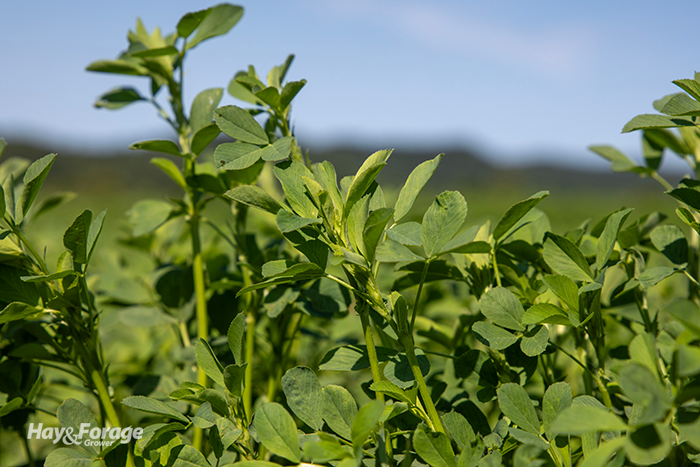Alfalfa qualifies for conservation payments |
| By Amber Friedrichsen, Managing Editor |
 The National Alfalfa & Forage Alliance (NAFA) announced last week that alfalfa will now be included as a short-term perennial option in the USDA’s Natural Resources Conservation Service (NRCS) 328 Practice for Conservation Crop Rotation. NRCS offices in 16 states have adopted this practice and have released payment scenarios on a per-acre basis for incorporating alfalfa into conservation crop rotations. These payments range from $60.44 to $79.07, depending on the state. According to NAFA, its representatives have been working on this process for several years and will continue to do so until all states have adopted alfalfa as a short-term perennial option in conservation crop rotations. This is a part of a larger effort to urge NRCS and Congress to incentivize alfalfa integration into NRCS programs and bring awareness of the crop’s environmental and conservation benefits. What does this mean? Each of the 16 participating states have their own payment scenarios, which can be found here. In addition to payment per acre, which is listed below for each state, these documents include a detailed description of the payment scenario, a before situation, and an after situation. Arkansas – $60.44 Connecticut – $70.39 Kansas – $65.79 Louisiana – $64.36 Maine – $67.52 Massachusetts – $74.26 Michigan – $69.31 Minnesota – $73.14 Mississippi – $63.96 Nebraska – $66.86 New Hampshire – $67.32 North Dakota – $77.47 Rhode Island – $79.07 South Dakota – $64.40 Vermont – $68.98 Wisconsin – $67.90 Before situations: All states define a before situation in which annual crops were being grown on the field with infrequent or no use of cover crops and an absence of perennial crops for at least three years. Erosion, soil quality, and pest management are listed as the primary concerns for conservation management. In Michigan, Minnesota, and Wisconsin, eligible fields must range in slope from nearly flat to C or D slopes. After situations: These include a list of potential benefits of growing alfalfa in conservation crop rotations for three to five years. The after situations outlined by each state vary slightly, but mainly include reducing wind and water erosion, building soil organic matter, improving soil moisture retention, and interrupting pest cycles. Minnesota and Michigan also qualify that providing feed and forage for domestic livestock and reducing the concentration of salts and other chemicals in saline soils can be potential purposes of growing alfalfa as a short-term conservation crop. If your state isn’t on the list, contact your state’s NRCS conservationist and encourage them to offer the scenario. For additional assistance, call the NAFA office at 651-484-3888. |
